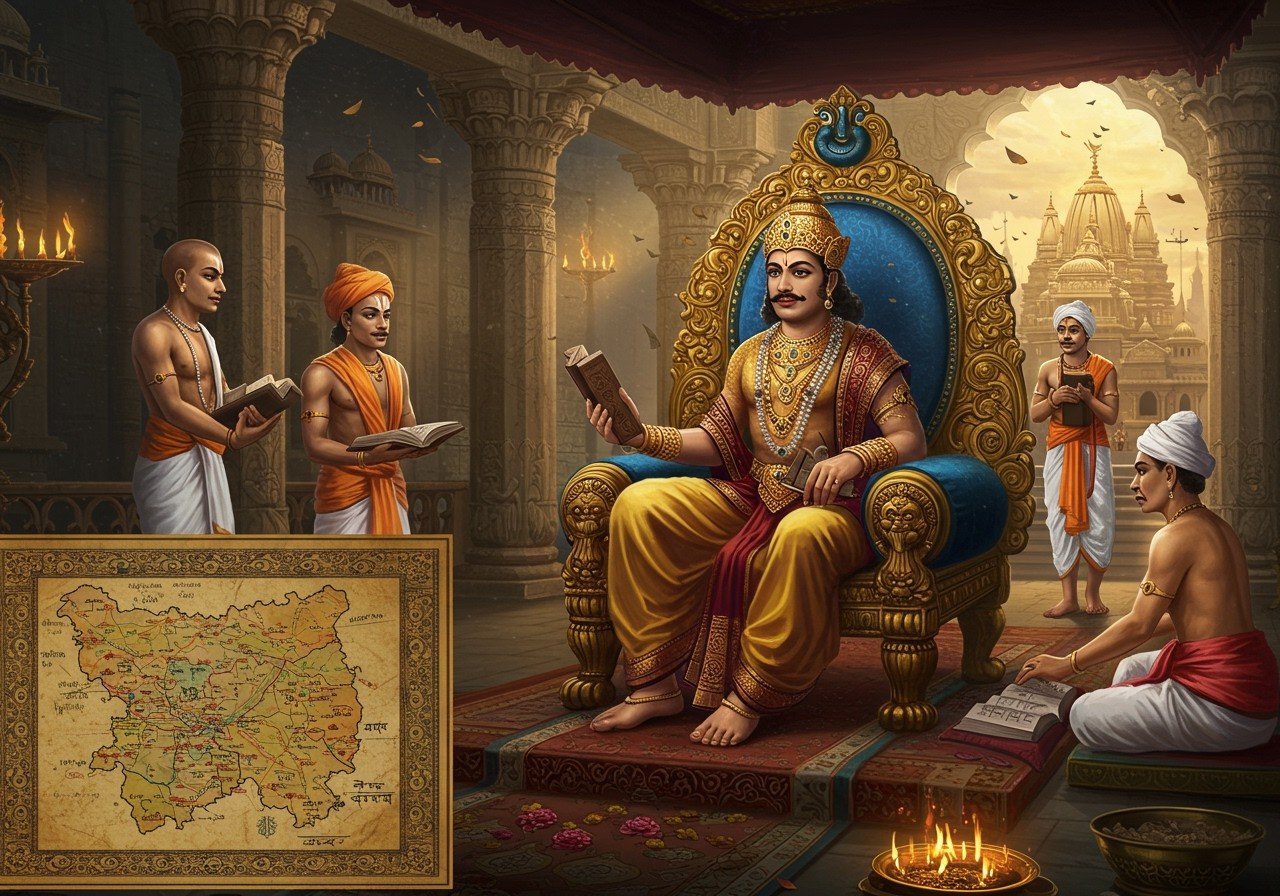
The Kanva Dynasty, a significant yet lesser-known chapter in Indian history, emerged after the decline of the Shunga Dynasty around 73 BCE. This era marked a pivotal transition before the rise of the Satavahana Empire. Delving into the Kanva Dynasty’s origins, ascendancy, and eventual decline unveils valuable insights into its historical context and enduring legacy.
The Genesis of the Kanva Dynasty
Around 73 BCE, as the Shunga Dynasty waned, the Kanva Dynasty arose. Vasudeva Kanva, the dynasty’s founder, initially served as a minister within the Shunga court. Amidst internal strife, he orchestrated the overthrow of the last Shunga ruler, Devabhuti. Vasudeva Kanva’s ascension inaugurated a new epoch in Magadha. The Kanvas, being Brahmins, accentuated dharma (moral and social order). Their reign fostered stability and prosperity, establishing a political structure deeply rooted in Brahminical traditions.
Consolidation and Governance of the Kanva Dynasty
The Kanva rulers prioritized consolidating their authority within Magadha. Their administrative framework featured a robust central authority, with local governors overseeing provinces. A substantial standing army safeguarded the kingdom against potential threats. The Kanvas championed trade and agriculture, stimulating economic growth. Their patronage of Vedic rituals and Brahminical culture further solidified their influence. Diplomatic ties with neighboring kingdoms ensured political equilibrium.
Cultural and Religious Contributions
Devout Hindus, the Kanva rulers actively promoted Vedic culture. They supported the construction of temples and the performance of grand Vedic sacrifices (yajnas). Their reign ensured the preservation of sacred texts and rituals. Brahminical scholarship flourished under their patronage, with numerous learned Brahmins receiving royal support. The Kanvas fostered Sanskrit literature and artistic expression, ushering in a cultural renaissance. Their championing of Hinduism revitalized orthodox practices and reinforced Brahminical authority.
The Decline of the Kanva Dynasty
Around 28 BCE, internal conflicts and external pressures precipitated the Kanva Dynasty’s decline. The last ruler, Susarman, confronted challenges from burgeoning regional powers. The Satavahanas, led by Simuka, played a pivotal role in the Kanvas’ downfall. The absence of a clear succession plan and internal dissension weakened their rule. The combined military strength of the Satavahanas and their allies ultimately led to the Kanva Dynasty’s collapse.
Transition to Satavahana Rule and its Aftermath
The Kanva Dynasty’s demise paved the way for the Satavahana Empire’s ascendancy. The Satavahanas introduced significant changes, notably promoting maritime trade. Building upon the Kanvas’ foundations, they continued to support agricultural practices and urban development. This period witnessed further advancements in Prakrit and Sanskrit literature, with notable works produced under royal patronage. The Satavahana era also saw the spread of Buddhism and Jainism, reflecting the era’s religious diversity.
The Enduring Legacy
Despite their relatively short reign, the Kanvas left an indelible mark on the Indian subcontinent. Their emphasis on Vedic rituals and Brahminical traditions played a crucial role in preserving and disseminating Hindu culture. The Kanvas’ administrative and economic policies established a stable foundation for subsequent dynasties. Their patronage of arts and literature enriched ancient India’s cultural tapestry. The Kanvas’ fall, facilitating the rise of the Satavahanas, exemplifies the dynamic and ever-shifting currents of Indian history.
Exploring the Spiritual Legacy of Ancient Dynasties with Poojn.in
At Poojn.in, we recognize the profound connection between India’s ancient dynasties and spiritual traditions. As you delve into the history of the Kanva Dynasty, enhance your spiritual understanding with authentic ritual items from our collection. Our handcrafted bamboo stick containers provide a beautiful and respectful way to store and use incense sticks, connecting you to the rituals and practices of ancient times.
For those seeking to create a sacred space for meditation and reflection, consider our Kush Asan mats. Made with traditional materials and Vedic processes, these mats offer a grounding and authentic experience for your spiritual practices, echoing the reverence for tradition upheld by dynasties like the Kanvas.
Frequently Asked Questions about the Kanva Dynasty
What led to the establishment of the Kanva Dynasty? The Kanva Dynasty was established following the overthrow of the Shunga Dynasty by Vasudeva Kanva, a Brahmin minister in the Shunga court. This transition of power occurred around 73 BCE.
What were the key accomplishments of the Kanva Dynasty? The Kanvas maintained stability and largely continued the administrative structures of the Shunga Dynasty. They were also patrons of Hindu culture and traditions, contributing to their preservation. Their rule, though brief, left a lasting impact on the region.
What factors contributed to the decline and eventual fall of the Kanva Dynasty? The Kanva Dynasty declined due to a combination of internal strife and external pressures. The last ruler, Susarman, faced challenges from regional powers, particularly the Satavahanas under Simuka, ultimately leading to their downfall around 28 BCE.
What is the historical significance of the Kanva Dynasty? The Kanva Dynasty, though relatively short-lived, represents a bridge between the Shunga and Satavahana periods. They played a vital role in maintaining cultural and administrative continuity, particularly in their patronage of Hindu traditions. Their story offers valuable insights into the complexities of ancient Indian history.
Explore further insights into ancient Indian history and discover authentic ritual items at poojn.in.


